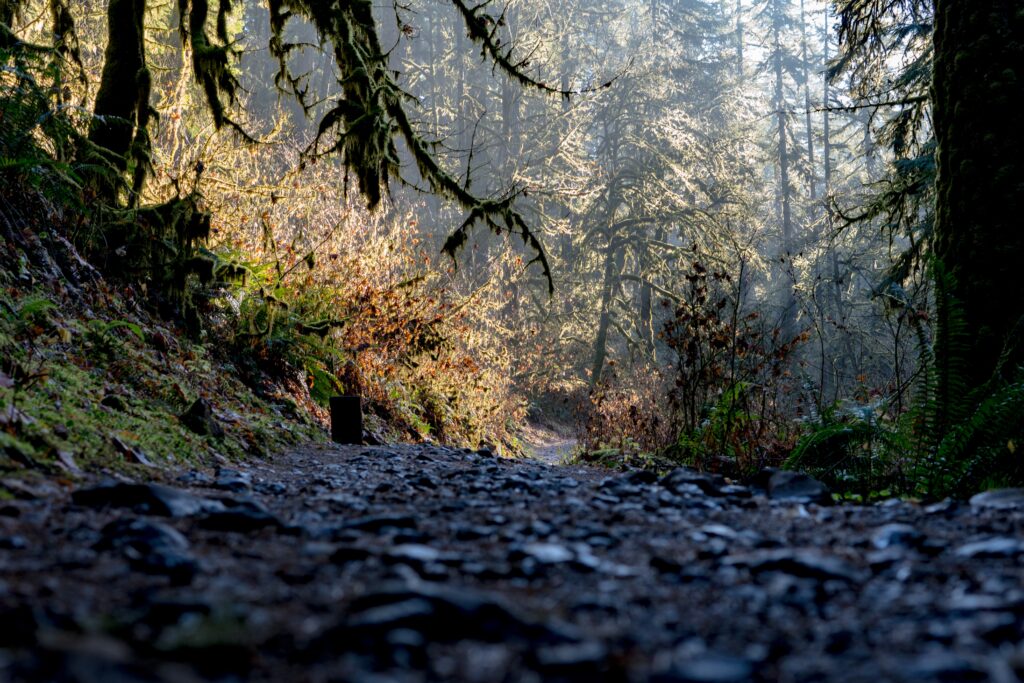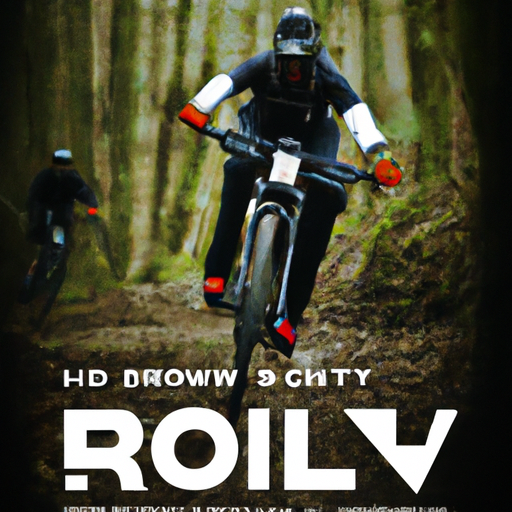Hey there, E-Bike enthusiasts! Are you ready to take your riding skills to the next level? In our “Advanced E-Bike Riding Tips” section, we aim to guide you through the intricate technical aspects of e-biking. Today, we’ll be exploring the thrilling world of flow trail riding with your electric mountain bike. If you’re an intermediate to advanced rider with a strong understanding of e-bike components and safety measures, this article is for you. Get ready to learn how to ride with rhythm and flow, unlocking a whole new level of excitement and adrenaline on your e-bike adventures. So, let’s dive in and explore the techniques that will elevate your riding experience to new heights!
What is flow trail riding?
Flow trail riding is a style of mountain biking that focuses on maintaining a smooth and uninterrupted rhythm as you navigate down the trail. It is all about finding the perfect balance between speed and control, allowing you to flow through the trail with ease and efficiency. Unlike other styles of mountain biking that may involve technical sections or challenging obstacles, flow trail riding is characterized by its flowing and rhythmic nature.
Definition of flow trail riding
Flow trail riding can be defined as a style of mountain biking that emphasizes maintaining momentum and flow while riding through a trail. It involves using the natural rhythm of the trail to your advantage, smoothly transitioning between sections and maneuvering around obstacles. The goal is to achieve a seamless and enjoyable ride that feels effortless and exhilarating.
Benefits of flow trail riding
Flow trail riding offers a multitude of benefits, both physically and mentally. It provides a great cardiovascular workout, helping to improve your overall fitness and endurance. The flowing nature of the trail also works your core muscles, helping to strengthen your balance and stability. Additionally, flow trail riding can be a therapeutic experience, allowing you to fully immerse yourself in the present moment and enjoy the beauty of nature.
Understanding the basics
Before you embark on your flow trail riding journey, it is important to understand the basics and equip yourself with the right knowledge and gear.
Choosing the right electric mountain bike
When it comes to flow trail riding, choosing the right electric mountain bike is crucial. Look for a bike that is specifically designed for trail riding, with features such as full suspension, wide tires, and responsive brakes. Electric mountain bikes with a mid-drive motor are ideal for maintaining balance and control on flow trails. Consider factors such as battery life, motor power, and frame size to ensure that your bike is suited for the type of riding you want to do.
Proper gear and equipment
Ensuring that you have the proper gear and equipment is essential for a safe and enjoyable flow trail riding experience. Invest in a well-fitting helmet that provides adequate protection. Wear padded gloves to improve grip and reduce hand fatigue. Consider wearing knee and elbow pads for added protection during falls or collisions. It is also important to wear moisture-wicking clothing to keep you cool and comfortable throughout your ride.
Safety tips for flow trail riding
While flow trail riding is generally a safe and enjoyable activity, it is important to prioritize your safety. Always ride within your skill level and be aware of your surroundings. Practice good trail etiquette, such as yielding to other riders and hikers. Maintain a safe speed and be prepared to slow down or stop when necessary. It is also recommended to carry a basic first aid kit and a cell phone in case of emergencies.

Developing rhythm and flow
To truly master flow trail riding, it is essential to develop a sense of rhythm and flow on your bike. This involves understanding and implementing proper body positioning, cornering techniques, and the art of pumping terrain features.
Understanding body positioning
Maintaining the correct body positioning is crucial for achieving flow on flow trails. Keep your weight centered over the bike with a slight bend in your elbows and knees. Look ahead and keep your gaze focused on the trail, rather than directly in front of your wheel. This will help you anticipate changes in the trail and maintain balance and control throughout your ride.
Mastering cornering techniques
Cornering is a key skill in flow trail riding as it allows you to navigate through turns smoothly and efficiently. Approach corners with an appropriate amount of speed, keeping your body low and leaned into the turn. Shift your weight to the outside pedal and direct your gaze towards the exit of the corner. As you exit the turn, gradually straighten your bike and return to a centered position.
Learning to pump terrain features
Pumping terrain features is a technique used to generate momentum and maintain speed without pedaling. It involves using the natural contours of the trail, such as berms and rollers, to your advantage. As you approach a terrain feature, compress your bike by bending your arms and legs. As you transition out of the feature, explosively extend your arms and legs, propelling your bike forward and maintaining your speed.
Building bike-handling skills
To become proficient in flow trail riding, it is important to continuously improve your bike-handling skills. This includes practicing manualing and wheelies, improving balance and stability, and navigating technical sections with confidence.
Practicing manualing and wheelies
Manualing and wheelies are advanced bike-handling skills that can greatly enhance your flow trail riding experience. Manualing involves lifting the front wheel of your bike off the ground using your body weight and balance. Wheelies, on the other hand, involve lifting the front wheel while continuing to pedal. Practicing these skills in a controlled environment will help you develop a better sense of balance and control on your bike.
Improving balance and stability
Balance and stability are key aspects of flow trail riding. One way to improve these skills is by practicing track stands, which involve keeping your bike stationary while balancing on just your pedals. By mastering track stands, you will develop better body control and stability, allowing you to confidently navigate through technical sections and maintain your flow on the trail.
Navigating technical sections
Flow trails can sometimes have technical sections, such as rock gardens or drops, that require precise bike handling. To navigate these sections with ease, focus on maintaining a relaxed body position and keeping your weight centered over the bike. Look for the smoothest line through the obstacle and use your body and bike to absorb impact. Gradually progress from easier technical sections to more challenging ones as you become more comfortable and skilled.

Finding the perfect flow trail
To fully immerse yourself in the world of flow trail riding, it is important to find the perfect trail that suits your riding style and skill level.
Researching local trail options
Start by researching local trail options in your area. Look for trails that are specifically labeled as flow trails or have a reputation for providing a smooth and seamless riding experience. Reach out to local riding communities or online forums to get recommendations from experienced flow trail riders.
Evaluating trail difficulty levels
Flow trails, like any other trail, can vary in difficulty levels. It is important to evaluate the difficulty level of a trail before riding it to ensure that it matches your skill level. Start with easier flow trails and gradually progress to more challenging ones as you gain confidence and skill.
Considering trail features and terrain
Consider the trail features and terrain when choosing a flow trail. Look for trails that offer a variety of features, such as berms, rollers, and jumps, that allow you to practice and apply your flow trail riding skills. Take into account the terrain and elevation changes of the trail, as this can greatly impact your riding experience.
Preparation and warm-up
Before embarking on your flow trail riding adventure, it is important to properly prepare your body and mind. This includes stretching exercises for flexibility, a cardiovascular warm-up routine, and mental preparation for the ride ahead.
Stretching exercises for flexibility
Performing stretching exercises before your ride can help improve your flexibility and prevent injuries. Focus on stretching your calves, hamstrings, quadriceps, glutes, and upper body muscles. Hold each stretch for at least 30 seconds and remember to breathe deeply throughout the stretches.
Cardiovascular warm-up routine
A proper cardiovascular warm-up routine is essential to prepare your body for the physical demands of flow trail riding. Start with a light jog or brisk walk for 5-10 minutes to increase your heart rate. Incorporate dynamic movements such as high knees, butt kicks, and skipping to further warm up your muscles and joints.
Mental preparation for flow trail riding
Flow trail riding requires focus and mental clarity. Take a few moments before your ride to mentally prepare yourself for the challenges and enjoyment that lie ahead. Visualize yourself riding smoothly and confidently through the trail, envisioning each turn and feature. Set positive intentions for your ride and remind yourself to stay present and enjoy the experience.

Techniques for maintaining flow
Once you’re on the flow trail, it’s important to understand and implement techniques that will help you maintain your flow and enjoy a seamless riding experience.
Reading the trail ahead
One of the most important techniques for maintaining flow is reading the trail ahead. Look for upcoming features, obstacles, and turns, and anticipate how you will approach and navigate them. Pay attention to changes in terrain, such as loose gravel or wet surfaces, and adjust your riding style accordingly. By reading the trail ahead, you can make proactive decisions that will allow you to maintain speed and flow.
Maintaining consistent speed and momentum
Consistent speed and momentum are key factors in maintaining flow on the trail. Rather than constantly braking or pedaling, aim to maintain a steady speed throughout your ride. Utilize the pumping technique to generate momentum and propel yourself forward, especially on flat or uphill sections. By maintaining consistent speed, you’ll be able to smoothly transition from one section of the trail to the next without losing your flow.
Avoiding unnecessary braking
While braking is sometimes necessary for safety or to control speed, avoiding unnecessary braking can help you maintain your flow and momentum on the trail. Focus on using your body and bike to maneuver through turns and obstacles, rather than relying solely on your brakes. By maintaining proper body positioning and weight distribution, you can reduce the need for excessive braking and keep the flow of your ride.
Mastering obstacles
Flow trails can often present various obstacles that require mastery to navigate smoothly. Here are some tips for approaching and clearing common obstacles encountered on flow trails.
Approaching and clearing jumps
Jumps are a thrilling feature of flow trails, and mastering their approach and clearance is essential. Approach jumps with an appropriate amount of speed, keeping your weight centered and your body low. As you approach the take-off point, compress your bike by bending your arms and legs. Just before reaching the transition, explosively extend your arms and legs, propelling your bike upwards. Maintain a balanced and stable position in the air, and absorb the landing by bending your knees upon touchdown.
Dealing with rock gardens and drops
Rock gardens and drops are common obstacles found on flow trails that can test your bike handling skills. When approaching a rock garden, focus on maintaining a relaxed body position and keep your weight back. Look for smooth lines through the rocks and try to absorb the impacts by allowing your bike to move freely underneath you. When encountering drops, ensure that you approach them with an appropriate amount of speed and maintain a centered body position. As you launch off the drop, slightly extend your arms and legs to absorb the impact upon landing.
Managing switchbacks and berms
Switchbacks and berms are features that require precise handling to maintain flow. When approaching a switchback, scrub off enough speed to safely negotiate the turn, while still maintaining enough momentum to carry you through. Lean your bike into the turn and keep your weight centered. Gradually increase your speed as you exit the turn, transitioning smoothly into the next section of the trail. When riding berms, aim to enter them with enough speed to allow your bike to naturally follow the curve of the berm. Maintain a low and centered body position, and use your body and bike to generate speed and maintain control throughout the turn.

Gaining confidence and speed
Building confidence and increasing your speed on flow trails is all about gradual progression and trust in your abilities and equipment.
Progressing gradually to higher speeds
As you gain more experience and confidence on flow trails, you can gradually progress to higher speeds. Start by familiarizing yourself with the trail at a comfortable pace, identifying sections where you can gain additional speed. As you become more comfortable with the terrain and flow of the trail, gradually increase your speed while maintaining control and stability. Always ride within your limits and only push your speed as far as you feel comfortable.
Developing trust in your bike
Having trust in your bike is crucial for gaining confidence and speed on flow trails. Ensure that your bike is properly maintained and in good working condition. Familiarize yourself with its components and how they function, such as the suspension system and brakes. Regularly check your tire pressure and ensure that your bike is properly fitted to your body. By having trust in your bike’s capabilities, you can let go of hesitation and fully focus on your ride.
Overcoming fear of falls and crashes
Falls and crashes are an inherent part of mountain biking, but learning to overcome the fear associated with them is essential for gaining confidence and speed on flow trails. In order to minimize your risk of injury, always wear proper safety gear and ride within your skill level. Gradually challenge yourself on increasingly difficult trails to build your skill and confidence. By accepting that falls and crashes may happen, and learning from each experience, you can overcome your fears and fully enjoy the exhilaration of flow trail riding.
Post-ride reflection and improvement
After a flow trail ride, take the time to reflect on your performance and identify areas for improvement. Setting goals for future rides will help you continue to grow and progress in your flow trail riding journey.
Analyzing your flow trail rides
Analyzing your flow trail rides is a valuable way to assess your performance and identify areas for improvement. Look back on your ride and evaluate your body positioning, cornering technique, and general flow throughout the trail. Take note of any sections where you may have lost momentum or encountered difficulties. By analyzing your rides, you can gain a better understanding of your strengths and weaknesses and focus on specific areas for improvement.
Identifying areas for improvement
Once you have analyzed your flow trail rides, it’s time to identify areas for improvement. This could include refining your body positioning and cornering technique, practicing specific bike-handling skills, or building your physical fitness and endurance. By identifying specific areas for improvement, you can create a plan to address those areas and continue to progress as a flow trail rider.
Setting goals for future rides
Setting goals for future rides is an effective way to stay motivated and continue refining your flow trail riding skills. Whether it’s mastering a challenging section of a trail, improving your speed and efficiency, or conquering a specific obstacle, setting goals will give you something to work towards. Break down your goals into smaller, achievable milestones and celebrate your progress along the way. By setting goals, you’ll have a clear direction for your flow trail riding journey and constantly strive for improvement.
In conclusion, flow trail riding with your electric mountain bike is a dynamic and exhilarating activity that requires skill, technique, and practice. By understanding the basics, developing rhythm and flow, building bike-handling skills, finding the perfect flow trail, preparing and warming up properly, maintaining flow, mastering obstacles, gaining confidence and speed, and reflecting and improving, you can become a proficient and confident flow trail rider. So hop on your electric mountain bike, find a flow trail, and experience the joy of riding with rhythm and flow!




